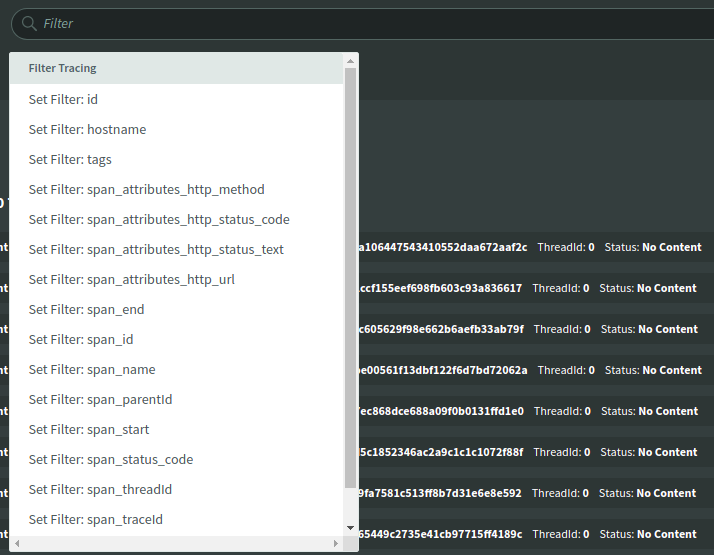HTTP Tracing
NodeSource has introduced Tracing support, a facility to gather information throughout the lifecycle of an HTTP/DNS/Other request. The collected information can be used for debugging latency issues, service monitoring and more. This is a valuable addition to users for those who are interested in debugging a request latency. Tracing traces user requests through a Node application, collecting data that can help find the cause of latency issues, errors, and other problems.
Enabling Tracing via N|S Console UI
- Enter in your process
- Click in Process configuration
- Activate the toogle for Tracing
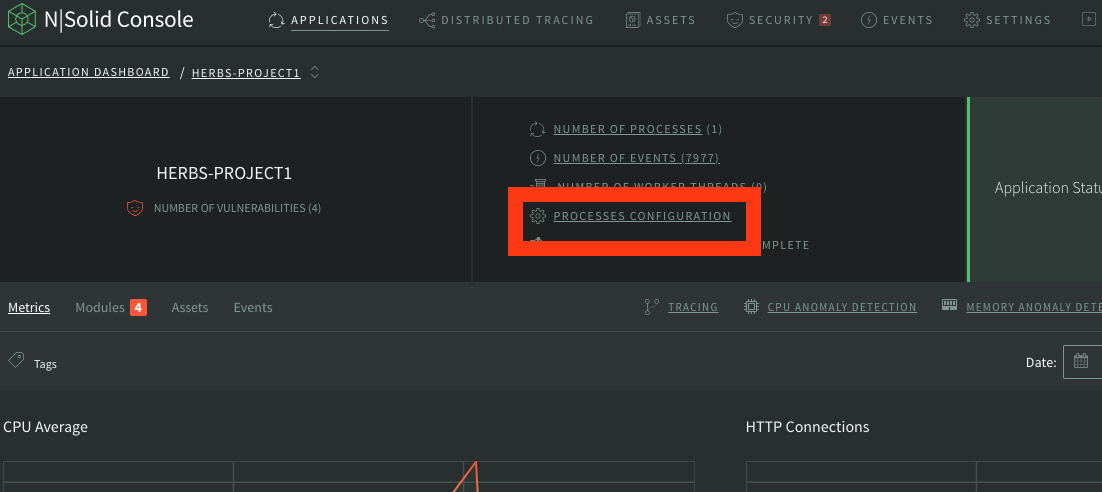
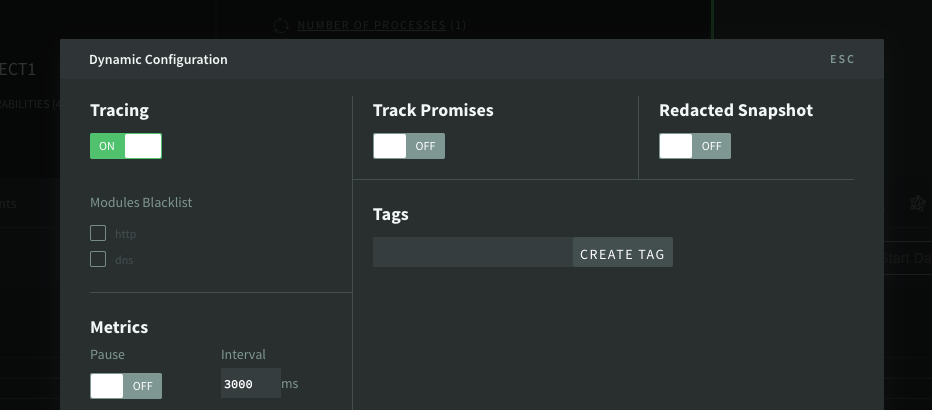
Distributed Tracing UI
In the N|Solid Console, go to the the applications dashboard and click on the TRACING button of the application to see the traces.
The view will be shown as below:
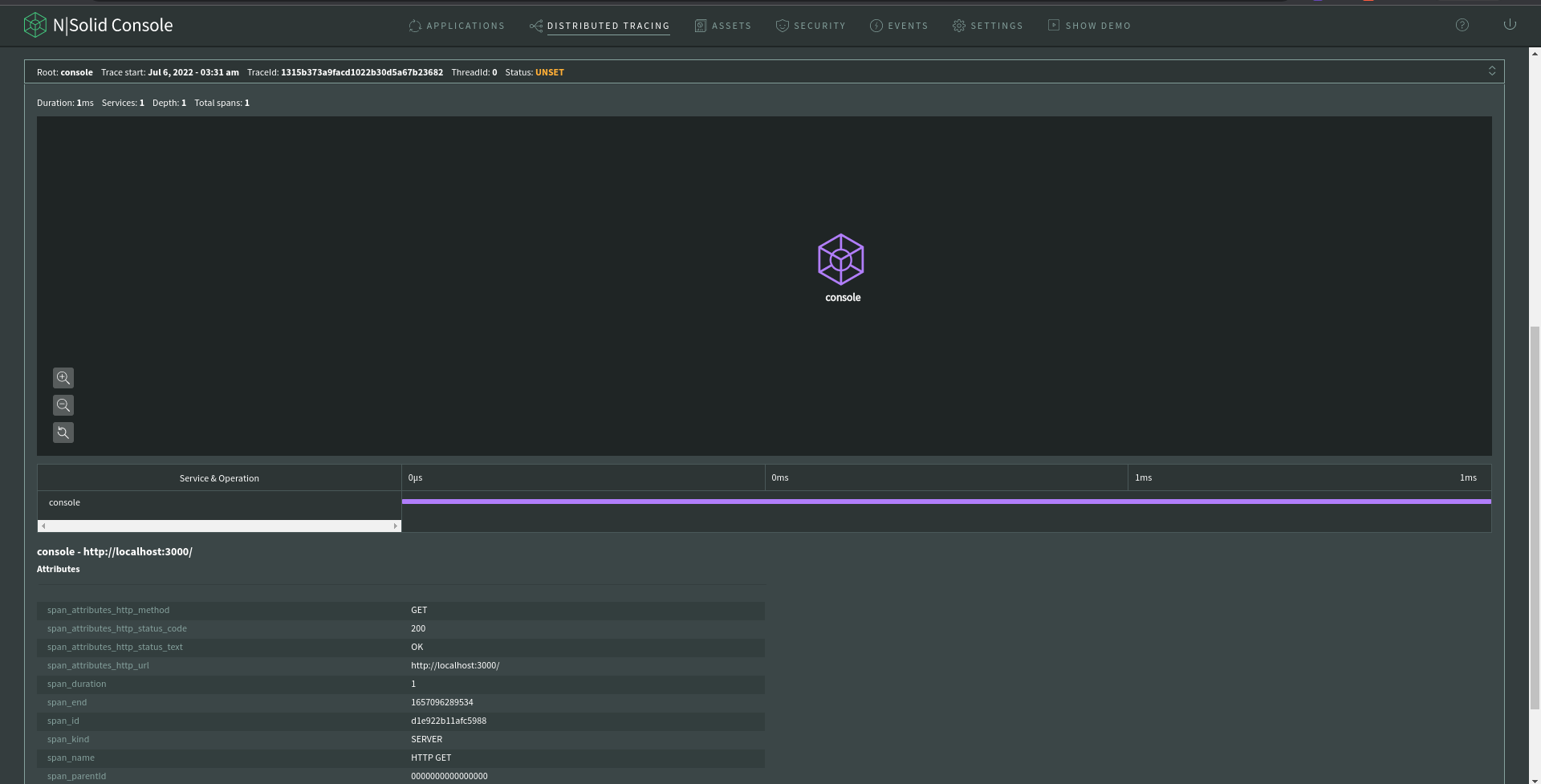
Tracing is consists of three key components below:
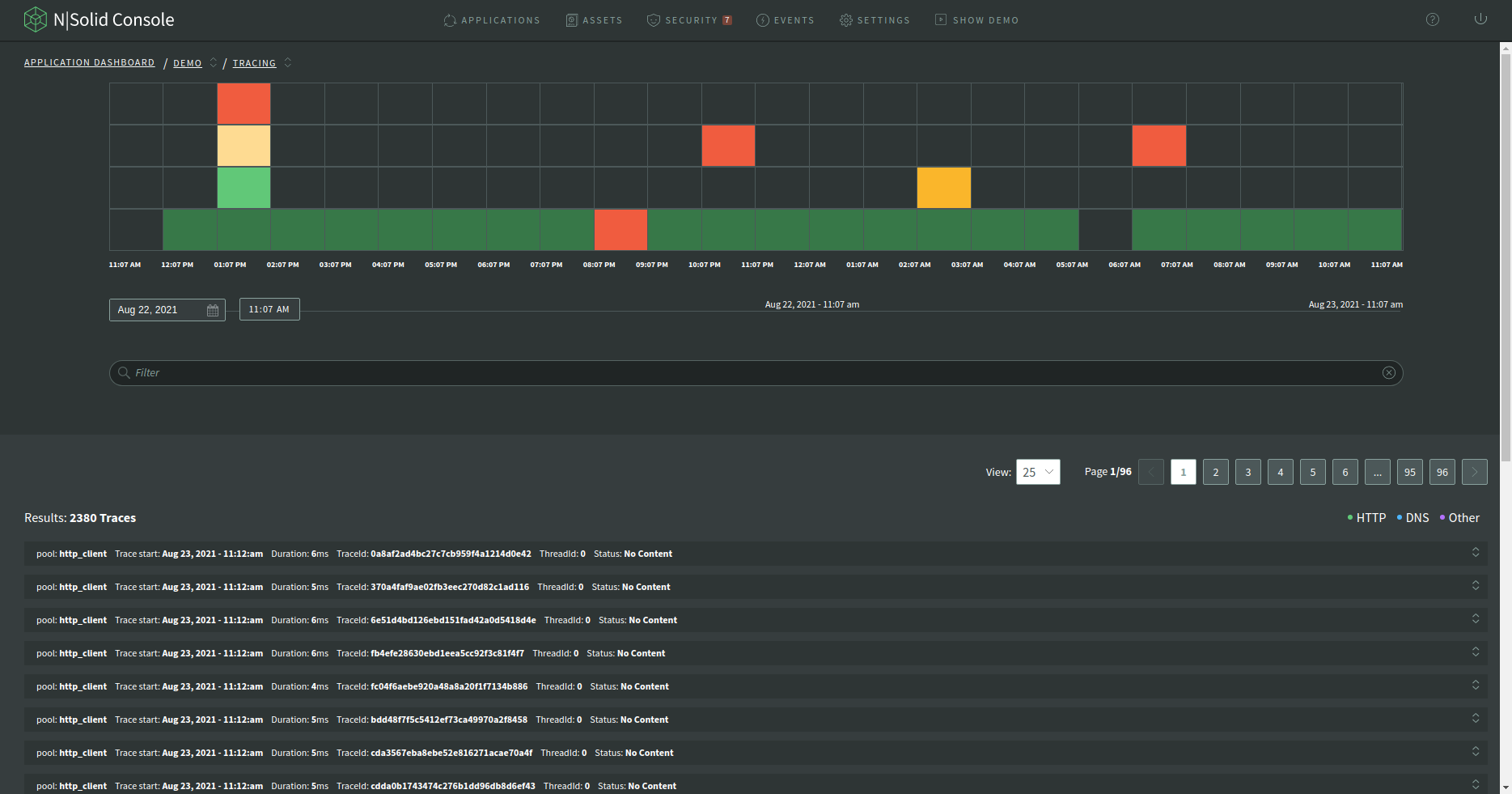
- Timeline Graph: a timeline graph of Tracing data showing the density of the number of tracing spans.
- Filter: a filter input area to filter the results by attributes of the span.
- Spans(Results): a span is the building block of a trace and is a named, timed operation that represents a piece of the workflow in the distributed system. multiple spans are pieced together to create a trace.
Timeline Graph
A timeline graph displays the density of the number of tracing spans. Below is the description of the color of a slot on the timeline graph:
| Color | Description |
|---|---|
| green | everything is ok |
| yellow | maybe you should look at this |
| red | definitely you should look at this |
Assume that a simple request was made to the “console” service to monitor traces:
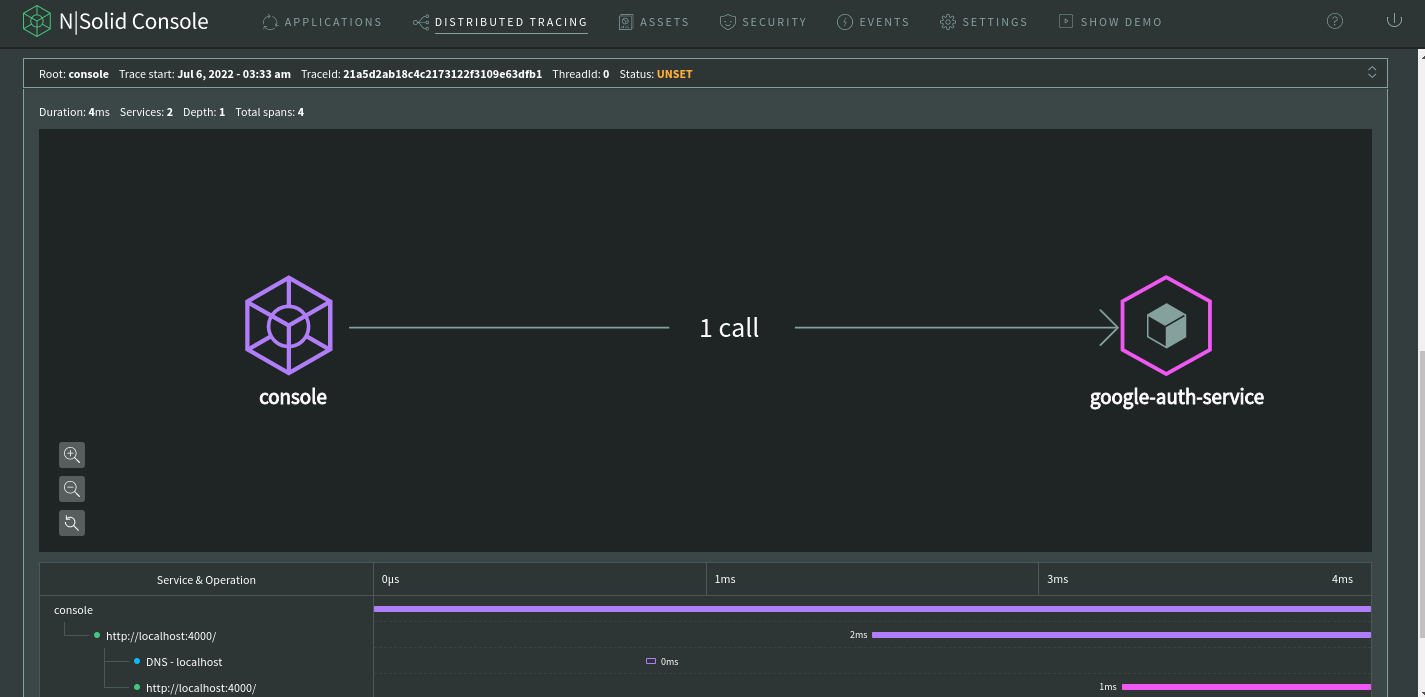
As a result, the Console displays the whole “span” information.
Span
A span is the building block of a trace and is a named, timed operation that represents a piece of the workflow in the distributed system. Multiple spans are pieced together to create a trace.
Traces are often viewed as a tree of spans that reflects the time that each span started and completed. It also shows you the relationship between spans. A trace starts with a root span where the request starts. This root span can have one or more child spans, and each one of those child spans can have child spans.
Inspecting Span Details
To inspect the span details of a span, click on the title Service & Operation:
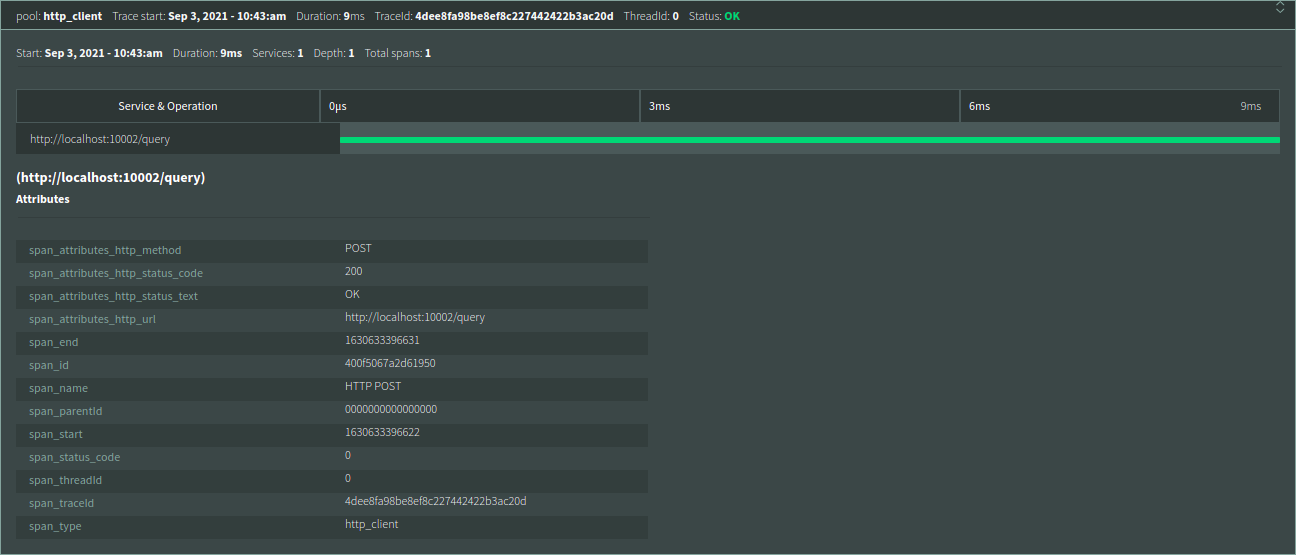
Below are the attributes of the span:
| Attribute | Description |
|---|---|
| id | the id of the application |
| app | the name of application |
| hostname | the name of the host machine |
| tags | the tags of the application |
| span_attributes_http_method | the http method of span attributes |
| duration | the duration of the span |
| span_attributes_http_status_code | the http status code of the span attributes |
| span_attributes_http_status_text | the http status text of the span attributes |
| span_attributes_http_url | the http url of the span attributes |
| span_end | the end time of the span |
| span_id | the id of the span |
| span_name | the name of the span |
| span_parentId | the parent ID of the span |
| span_start | the start time of the span |
| span_status_code | the status code of the span |
| span_threadId | the thread ID of the span |
| span_traceId | the trace ID of the span |
| span_type | the type of the span |
Let's authenticate using the console service, which is going to perform a request to the google-auth-service to authenticate the user.
The graph below represents a “path”, from the console service to the authentication service, N|Solid will monitor the HTTP traces in this distributed system.
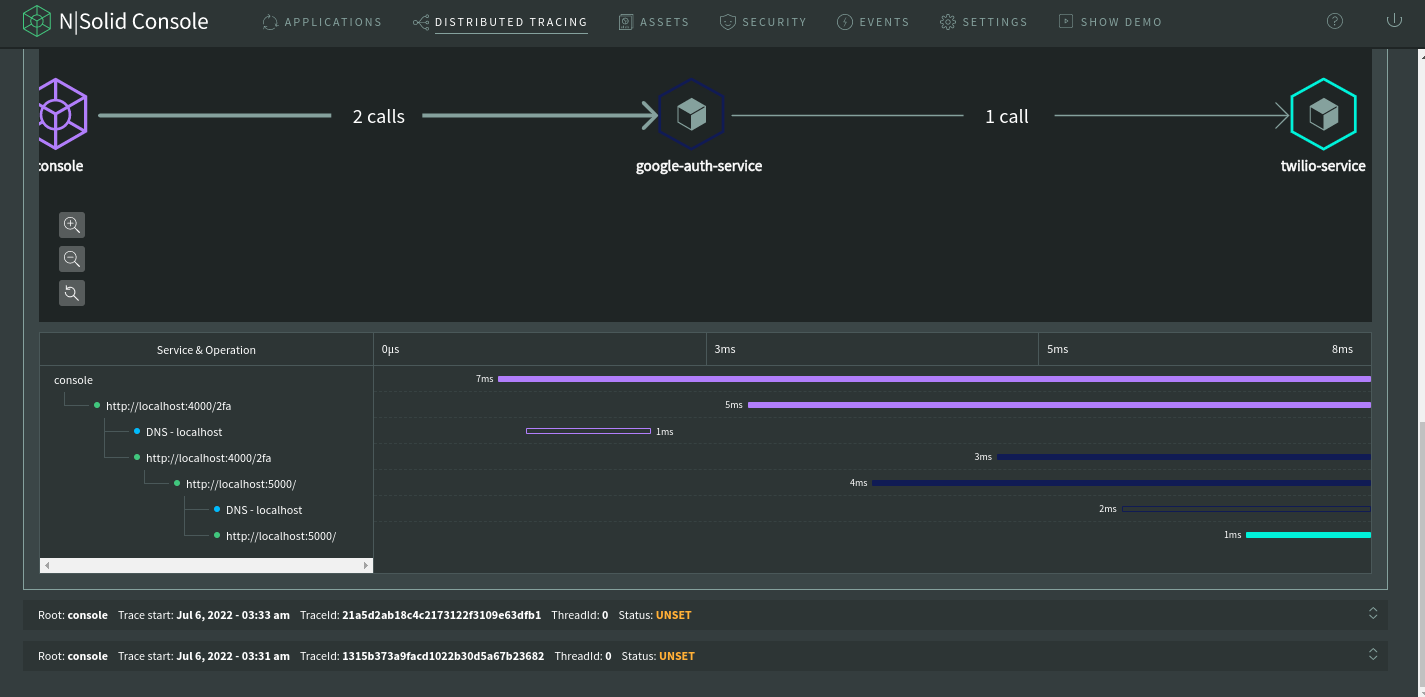
As such, graph is showing the whole “path”, starting from the console and finishing with the sms service. This is how distributed tracing works using N|Solid managed systems.
The collected information can be used for debugging latency issues, service monitoring, and more. This is a valuable addition to users for those who are interested in debugging a request latency. Tracing traces of user requests through multiple Node applications, and collecting data that can help find the cause of latency issues, errors, and other problems in a distributed system.
Changing Update Settings
You can configure the update settings for distributed tracing on the top of the Distributed Tracing view:

Basically, you can turn on or off Real Time Update and change the update interval. The default update interval is 10 seconds. Available options are 10, 15, 30 or 60 seconds.
Changing Time Range
To change the time range of tracing, click the calendar icon below the timeline graph:
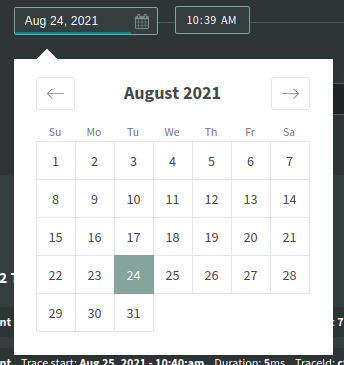
It will show a calendar for selecting a time range. The timeline graph range is updated every 1 minute, with an interval of 1 minute for the date range to move.
Filtering Results
Filtering the results by attributes of the span is made easy for users. Just tab the Filter input area and select attribute(s) you want to filter as below:
